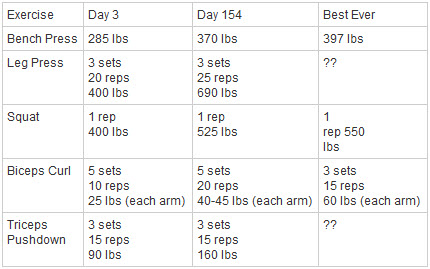
Effective Ways to Add and Subtract Fractions: A Practical Guide for 2025
Understanding how to add and subtract fractions is an essential mathematical skill that has numerous applications in everyday life, from baking to budgeting. This guide will explore effective methods for adding and subtracting fractions, offering practical strategies and step-by-step explanations suitable for all levels, particularly for helping young learners grasp these concepts. We will discuss adding fractions with both like and unlike denominators, delve into mixed numbers and improper fractions, and provide illustrative examples. By the end of this article, you'll be better equipped with the knowledge to approach fraction problems confidently and effectively.
We will also touch upon common pitfalls to avoid, the importance of finding a common denominator, how to simplify fractions after performing operations, and the various strategies available for visualizing these concepts. Along with that, a range of learning resources such as worksheets and interactive games will be introduced to make practicing more enjoyable.
Key takeaways include:
- Step-by-step processes for adding and subtracting fractions
- Techniques for handling mixed numbers and improper fractions
- Resources for additional practice and reinforcement
Essential Techniques for Adding Fractions with Like Denominators
Understanding Like Denominators
When two fractions have the same denominator, this simplifies the addition process. The only requirement is to add the numerators while keeping the denominator constant. For example, when adding \( \frac{2}{5} + \frac{3}{5} \), you simply combine the top numbers: \( 2 + 3 = 5 \), leading to \( \frac{5}{5} \), which ultimately simplifies to 1.
Step-by-Step Process for Adding Fractions
To add fractions effectively:
- Add the numerators together.
- Keep the denominator the same.
- Simplify the result if necessary.
Practice problem: \( \frac{1}{4} + \frac{2}{4} \) results in \( \frac{3}{4} \). This shows how easy it is when the denominators are alike!
Visualizing Fraction Addition
Using visual aids can enhance understanding. Consider using fraction circles or bars to illustrate how the fractions are combined. When you add \( \frac{1}{4} + \frac{2}{4} \), physically combining segments of a pie chart can provide a clearer representation of the total.
Advanced Techniques for Adding Fractions with Unlike Denominators
Finding a Common Denominator
To add fractions with different denominators, the first step is finding a common denominator. This is usually the least common multiple (LCM) of the two denominators. For instance, when adding \( \frac{1}{3} + \frac{1}{4} \), the LCM of 3 and 4 is 12. Adjust each fraction accordingly:
- Convert \( \frac{1}{3} \) to \( \frac{4}{12} \)
- Convert \( \frac{1}{4} \) to \( \frac{3}{12} \)
Now you can add them together: \( \frac{4}{12} + \frac{3}{12} = \frac{7}{12} \).
Adding Mixed Numbers
To add mixed numbers (e.g., \( 2\frac{1}{3} + 1\frac{2}{3} \)), first, convert them to improper fractions. For the example:
- Convert \( 2\frac{1}{3} \) to \( \frac{7}{3} \)
- Convert \( 1\frac{2}{3} \) to \( \frac{5}{3} \)
Add them as you would regular fractions: \( \frac{7}{3} + \frac{5}{3} = \frac{12}{3}, \) which simplifies to 4.
Common Mistakes in Adding Fractions
Many learners forget to find a common denominator which leads to errors. Another common error is neglecting to simplify the final answer. Always double-check your work to ensure accuracy!
Effective Strategies for Subtracting Fractions
Basics of Subtracting Fractions with Like Denominators
The process for subtracting fractions with like denominators is similar to addition. Simply subtract the numerators while keeping the denominator intact. For example, \( \frac{5}{6} - \frac{2}{6} = \frac{3}{6}, \) which further simplifies to \( \frac{1}{2} \).
Step-by-Step Process for Subtracting Fractions
To subtract fractions correctly:
- Subtract the numerators.
- Keep the denominator the same.
- Simplify the result, if possible.
By following this structure, you'll find that subtracting fractions becomes straightforward.
Subtraction with Unlike Denominators
When dealing with fractions that have different denominators, the first step is still to find a common denominator. For instance, to solve \( \frac{3}{5} - \frac{1}{2} \), first find that the LCM of 5 and 2 is 10. Adjust both fractions to: \( \frac{6}{10} - \frac{5}{10} = \frac{1}{10} \).
Tips for Simplifying Fractions
Understanding Simplification
Simplification is crucial in fraction operations. This involves dividing both the numerator and denominator by their greatest common factor (GCF). For example, if you get \( \frac{8}{12} \) after adding two fractions, simplify it to \( \frac{2}{3} \) by dividing both by 4.
Practice Problems for Adding and Subtracting Fractions
Engaging in practice problems can reinforce your skills. Consider working through worksheets available online. These can address both adding and subtracting fractions, providing various scenarios to help solidify your understanding. For instance, complete problems like:
- What is \( \frac{3}{4} + \frac{1}{4}? \)
- Calculate \( \frac{2}{3} - \frac{1}{6}. \)
Common Errors in Fraction Addition and Subtraction
Error in Fraction Addition
One common mistake in adding fractions is overlooking the necessity to have a common denominator. Ensure you always convert before adding. For example, when incorrectly adding \( \frac{1}{2} + \frac{1}{4} \) without finding a common denominator, you might mistakenly think the answer is \( \frac{2}{6} \) instead of the correct \( \frac{3}{4} \).
Error in Fraction Subtraction
Similarly, in subtraction, failing to convert fractions appropriately can lead to incorrect results. Properly adjusting denominators before performing subtraction helps avoid this common pitfall.
Checking Work for Accuracy
Always double-check your answers by revisiting each step in the process. This ensures that you have not made a calculation error and have simplified fractions correctly.
Resourceful Worksheets and Practice Activities
Using Fraction Addition Worksheets
Worksheets are an excellent resource for both teachers and students. You can find various types of worksheets that cater to different skills and levels. For instance, these addition worksheets offer tailored practice problems that can help reinforce your understanding.
Fraction Subtraction Worksheets
Similarly, practicing with subtraction worksheets helps students recognize patterns and solidify their skills. Explore subtraction worksheets, which cover a range of problems from basic to advanced levels.
Engaging Games to Reinforce Knowledge
Utilizing games can make learning fractions enjoyable. There are numerous online platforms offering interactive games focused on adding and subtracting fractions, ensuring that learning remains engaging.
Q&A: Common Questions About Adding and Subtracting Fractions
What is the first step in adding fractions?
The initial step is determining whether the fractions have like or unlike denominators. If they are the same, proceed to add the numerators. If not, find a common denominator.
How do I handle mixed numbers during operations?
Convert mixed numbers into improper fractions before performing addition or subtraction. Then, proceed with the calculations as you would for regular fractions.
Can you give an example of a fraction error?
A common error occurs when a student adds \( \frac{1}{2} + \frac{1}{4} \) without adjusting the denominators, potentially leading to an incorrect answer of \( \frac{2}{6} \) instead of the correct \( \frac{3}{4} \).
How can I simplify my fraction results?
After combining fractions, check for a GCF between the numerator and denominator, and divide both by this number to simplify your answer.
What tools can help with fraction practice?
Utilizing online calculators, worksheets, and educational games can greatly assist in practicing and understanding how to add and subtract fractions effectively.
As you continue practicing these strategies, you'll build confidence not only in adding and subtracting fractions but also in applying these skills to real-life situations, from cooking to construction projects. Don't hesitate to seek additional resources and ask questions—mastery comes with time and practice!

